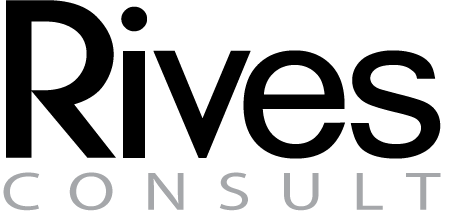Customer-Centric Product Development for Market Fit
- Rives

- 14 hours ago
- 3 min read
Creating products that truly resonate with users is a challenge many companies face. The key to success lies in understanding the needs, preferences, and pain points of your target audience. This approach ensures that your product not only meets market demands but also builds lasting customer loyalty. In this article, we will explore effective user-focused product strategies that help businesses achieve a strong market fit.
Understanding User-Focused Product Strategies
User-focused product strategies prioritize the customer’s experience and feedback throughout the product lifecycle. This means involving users early and often, from ideation to post-launch improvements. By doing so, companies can avoid costly mistakes and create products that solve real problems.
Some practical steps to implement user-focused strategies include:
Conducting thorough user research: Surveys, interviews, and observation help gather insights about user needs.
Creating user personas: These fictional characters represent different segments of your audience and guide design decisions.
Prototyping and testing: Early versions of the product are tested with users to gather feedback and iterate quickly.
Continuous feedback loops: Post-launch, companies should keep collecting user input to refine and enhance the product.
For example, a startup developing a fitness app might interview potential users to understand their workout habits and challenges. They could then create personas like "Busy Professional" or "Fitness Newbie" to tailor features accordingly. Early prototypes could be tested with these personas to ensure the app is intuitive and valuable.

Implementing Customer-Centric Product Development
One of the most effective ways to ensure market fit is through customer-centric product development. This approach places the customer at the heart of every decision, from product design to marketing.
Customer-centric product development involves:
Identifying customer problems: Understand what issues your product can solve.
Validating solutions: Test assumptions with real users before full-scale development.
Iterating based on feedback: Use customer insights to refine features and usability.
Aligning business goals with customer needs: Ensure that product objectives support both company growth and user satisfaction.
A practical example is a software company that uses customer support tickets to identify common pain points. They prioritize fixing these issues in updates, which improves user satisfaction and retention.
This method reduces the risk of building features that customers do not want or need. It also fosters a culture of empathy and responsiveness within the product team.
Is Apple Product-Centric or Customer-Centric?
Apple is often cited as a company with a strong product vision. But is it product-centric or customer-centric? The answer is nuanced.
Apple’s approach combines both elements:
Product-centric: Apple invests heavily in design, innovation, and quality. Their products often introduce new technologies and set industry standards.
Customer-centric: Despite their focus on product excellence, Apple deeply understands user experience. Their devices are intuitive, reliable, and integrated into a seamless ecosystem.
For instance, the iPhone was revolutionary not just because of its hardware but because it addressed user frustrations with existing smartphones. Apple anticipated user needs and created a product that was easy to use and aesthetically pleasing.
This balance between product innovation and user experience is a key reason for Apple’s market success. Companies can learn from this by ensuring their innovations are grounded in real user benefits.

Practical Tips for Adopting User-Focused Strategies
To successfully implement user-focused product strategies, consider the following actionable recommendations:
Engage users early: Don’t wait until the product is complete to get feedback. Early engagement saves time and resources.
Use data wisely: Combine qualitative insights with quantitative data to get a full picture of user behavior.
Empower cross-functional teams: Encourage collaboration between design, development, marketing, and customer support.
Prioritize features based on impact: Focus on features that solve the most critical user problems.
Communicate transparently: Keep users informed about updates and how their feedback shapes the product.
For example, a SaaS company might hold monthly user webinars to gather feedback and share upcoming features. This builds trust and keeps the product aligned with user expectations.

Building Long-Term Market Fit with User Insights
Achieving market fit is not a one-time event but an ongoing process. Continuous learning from users helps companies adapt to changing needs and stay competitive.
Key strategies for long-term success include:
Monitoring user satisfaction: Use Net Promoter Scores (NPS) and other metrics to gauge happiness.
Analyzing churn reasons: Understand why users leave and address those issues.
Innovating based on trends: Stay ahead by anticipating future user needs.
Investing in customer support: Provide excellent service to build loyalty.
By embedding user insights into every stage of product development, companies can create products that not only fit the market but also evolve with it.
User-focused product strategies are essential for creating products that resonate with customers and achieve lasting success. By prioritizing user needs, validating assumptions, and iterating based on feedback, businesses can build products that truly fit the market. Whether you are a startup or an established company, adopting these strategies will help you stay relevant and competitive in a rapidly changing landscape.



